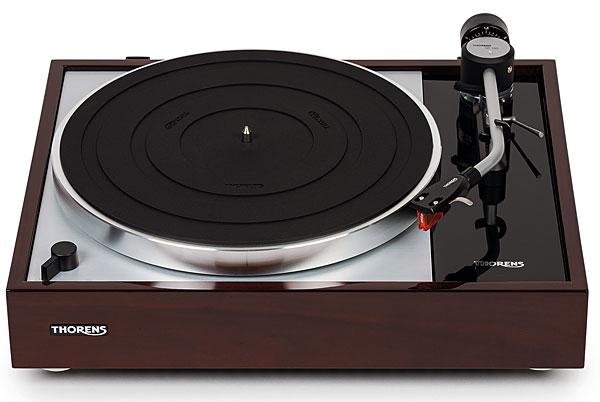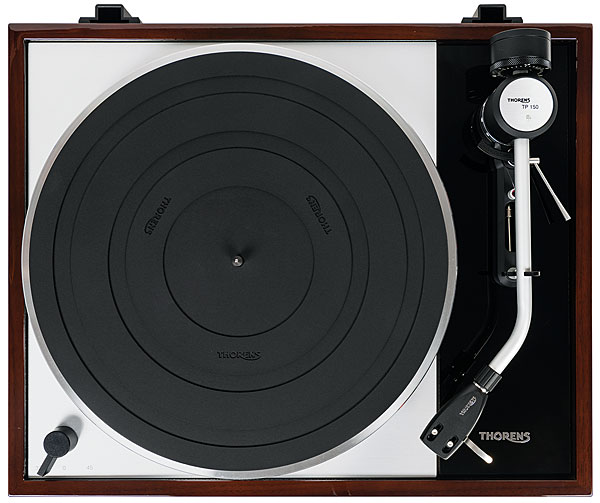Thorens TD 1500 Turntable

 A handful of turntable brands lay claim to the first suspended subchassis model, but few, unlike Thorens' TD 150 from 1965, were mass produced. Here's its great grandson
A handful of turntable brands lay claim to the first suspended subchassis model, but few, unlike Thorens' TD 150 from 1965, were mass produced. Here's its great grandson
Thorens CEO Gunter Kürten is true to his word: when we first met at the Tokyo High End Show in 2019, he hinted that the hugely-important, wildly-popular three-point suspended-subchassis, belt-drive TD 150 of 1965 might make a return in updated form. This wasn't your typical case of just exploiting retro because the TD 150 was more than a best-seller for Thorens. It was a breakthrough in the evolution of turntables.
Following the reborn TD 124 [as the TD 124 DD, HFN Jul '21] and the TD 160 [as the TD 1600/1601, HFN Nov '20], the born-again TD 150 as the TD 1500 follows the formula of slightly updating the looks without losing the instantaneous recognition factor, and with a factory-fitted arm. It's unlikely that the TD 1500 will appear sans arm, as the integration with the deck is complex, one of the modern updates being sockets to accept the user's choice of cables instead of captive leads. Also very '21st century' is the facility to use balanced XLRs, possibly a first on a deck selling for £1999.
Top Flight MM
What the price also includes is a cartridge from the evergreen Ortofon 2M range, but not an entry-level Blue or Red. Oh, no, this baby comes pre-fitted with the £295 2M Bronze, with nude fine line stylus and upgraded internals, including split pole pins and silver-plated copper wire.
So, while inflation has hit the TD 1500 in its transition from the TD 150, it's also worth pointing out that the TP 150 tonearm is vastly superior to the clunky TP 13 found on the original TD 150. I was no fan of that crude wand, no doubt the cause of so many TD 150s being purchased without arm, then fitted with an SME 3009. The TP 150, its roots in EMT tonearms of a half-century ago, is infinitely more refined and adjustable. It also uses the Ortofon-designed detachable headshell system, which I prefer to fixed. Those of you who find this heretical can just prepare your effigies of me and insert pins as required.

After factoring in a superior tonearm clearly related to the one on the £8000 TD 124 DD, and the 2M Bronze, further accounting for the TD 1500's higher relative cost to its antecedent is superior build quality. Its plinth, offered in black or walnut, is more solidly constructed, as is the more robust arm board. At the risk of sounding like a tyre kicker, the TD 1500 is slightly larger at 420x150x360mm versus the TD 150's 394x125x325mm (whd). The latter had a 3.2kg platter while the new deck's is a light 1.4kg, but even so, the TD 1500 weighs in at 7.9kg, while the venerable old TD 150 weighed 6.7kg.
Breezy Set-Up
Because of the integration of the arm and deck, a number of benefits are present that would not necessarily accompany an aftermarket arm, including super-swift cartridge swapping thanks to the supplied, easy-to-use overhang gauge. This comes in the form of an LP-sized template, with strobe disc on the other side, and it proved a boon when – in a fit of madness – I installed the heart-stoppingly expensive Ortofon Verismo with its exposed diamond cantilever.
As with most TD 150s, the TD 1500 only has one control, the on/off and speed selector on the left, but it's a lever instead of the TD 150's knob. Some TD 150s fitted with TP 13 arms had a second knob on the opposite corner of the top plate for cueing; the lift/lower lever on the TP 150 arm is sited near the arm pillar.
Full adjustability is another of the benefits over the original TD 150, with clever suspension levelling available through the platter, while the tonearm can be adjusted for height and azimuth through equally thoughtful methods. The anti-skating mechanism employs a sliding weight on a rod incorporated into the arm-rest section of the tonearm. It's attached to a nylon filament, which is fed up through a ruby bearing, and ultimately connected to the arm. As it's set up at the factory, that's another step less to deal with when assembling the deck for the first time. You simply remove two transit screws, position the belt, platter and mat, install the headshell with the pre-fitted 2M Bronze, and mount the counterweight.
It's the classic 'balance the arm until it floats' system, when a rotating scale on the counterweight is set to zero without altering the weight's position. You then dial in the tracking force – a mere 1.4g-1.7g is recommended and, although accurate, I always prefer to check with precision scales.


















































